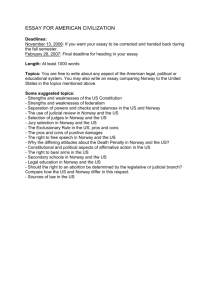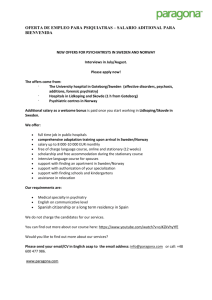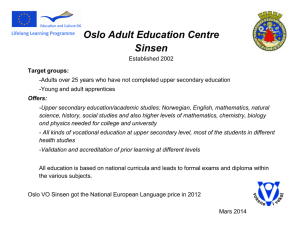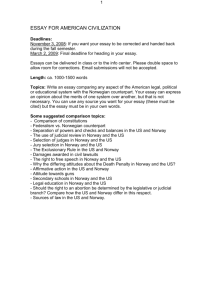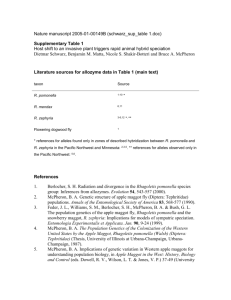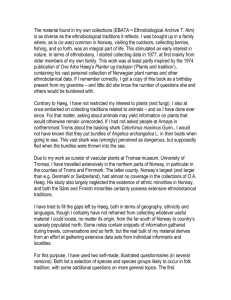English summary
advertisement
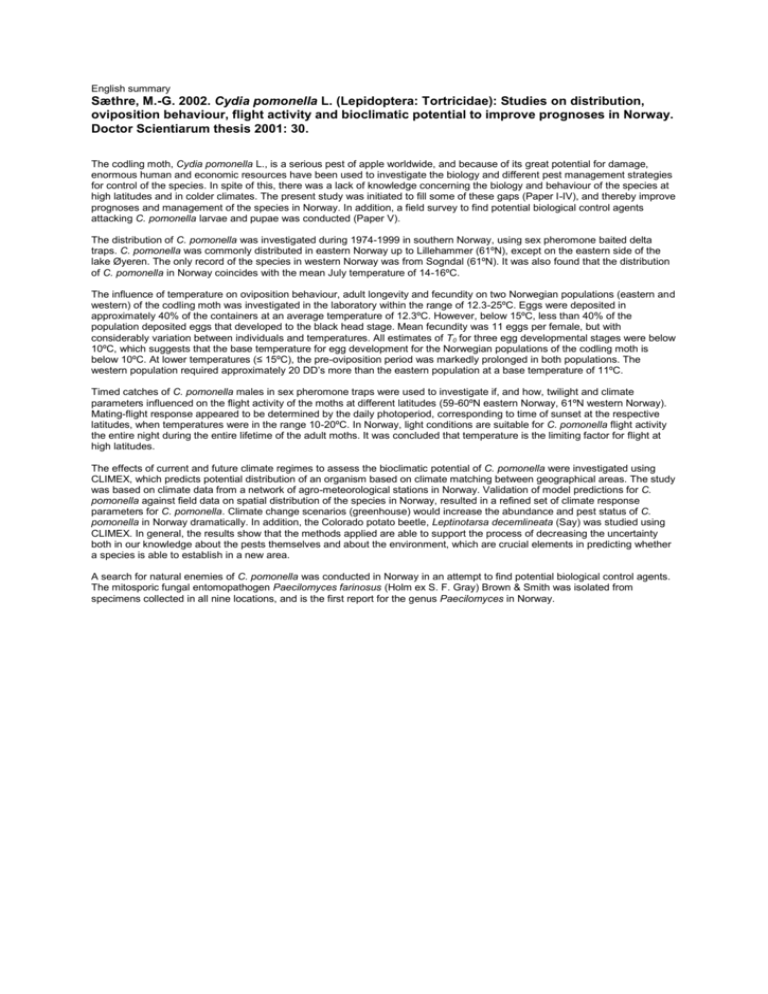
English summary Sæthre, M.-G. 2002. Cydia pomonella L. (Lepidoptera: Tortricidae): Studies on distribution, oviposition behaviour, flight activity and bioclimatic potential to improve prognoses in Norway. Doctor Scientiarum thesis 2001: 30. The codling moth, Cydia pomonella L., is a serious pest of apple worldwide, and because of its great potential for damage, enormous human and economic resources have been used to investigate the biology and different pest management strategies for control of the species. In spite of this, there was a lack of knowledge concerning the biology and behaviour of the species at high latitudes and in colder climates. The present study was initiated to fill some of these gaps (Paper I-IV), and thereby improve prognoses and management of the species in Norway. In addition, a field survey to find potential biological control agents attacking C. pomonella larvae and pupae was conducted (Paper V). The distribution of C. pomonella was investigated during 1974-1999 in southern Norway, using sex pheromone baited delta traps. C. pomonella was commonly distributed in eastern Norway up to Lillehammer (61ºN), except on the eastern side of the lake Øyeren. The only record of the species in western Norway was from Sogndal (61ºN). It was also found that the distribution of C. pomonella in Norway coincides with the mean July temperature of 14-16ºC. The influence of temperature on oviposition behaviour, adult longevity and fecundity on two Norwegian populations (eastern and western) of the codling moth was investigated in the laboratory within the range of 12.3-25ºC. Eggs were deposited in approximately 40% of the containers at an average temperature of 12.3ºC. However, below 15ºC, less than 40% of the population deposited eggs that developed to the black head stage. Mean fecundity was 11 eggs per female, but with considerably variation between individuals and temperatures. All estimates of T0 for three egg developmental stages were below 10ºC, which suggests that the base temperature for egg development for the Norwegian populations of the codling moth is below 10ºC. At lower temperatures (≤ 15ºC), the pre-oviposition period was markedly prolonged in both populations. The western population required approximately 20 DD’s more than the eastern population at a base temperature of 11ºC. Timed catches of C. pomonella males in sex pheromone traps were used to investigate if, and how, twilight and climate parameters influenced on the flight activity of the moths at different latitudes (59-60ºN eastern Norway, 61ºN western Norway). Mating-flight response appeared to be determined by the daily photoperiod, corresponding to time of sunset at the respective latitudes, when temperatures were in the range 10-20ºC. In Norway, light conditions are suitable for C. pomonella flight activity the entire night during the entire lifetime of the adult moths. It was concluded that temperature is the limiting factor for flight at high latitudes. The effects of current and future climate regimes to assess the bioclimatic potential of C. pomonella were investigated using CLIMEX, which predicts potential distribution of an organism based on climate matching between geographical areas. The study was based on climate data from a network of agro-meteorological stations in Norway. Validation of model predictions for C. pomonella against field data on spatial distribution of the species in Norway, resulted in a refined set of climate response parameters for C. pomonella. Climate change scenarios (greenhouse) would increase the abundance and pest status of C. pomonella in Norway dramatically. In addition, the Colorado potato beetle, Leptinotarsa decemlineata (Say) was studied using CLIMEX. In general, the results show that the methods applied are able to support the process of decreasing the uncertainty both in our knowledge about the pests themselves and about the environment, which are crucial elements in predicting whether a species is able to establish in a new area. A search for natural enemies of C. pomonella was conducted in Norway in an attempt to find potential biological control agents. The mitosporic fungal entomopathogen Paecilomyces farinosus (Holm ex S. F. Gray) Brown & Smith was isolated from specimens collected in all nine locations, and is the first report for the genus Paecilomyces in Norway.

